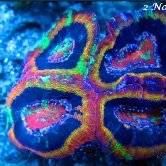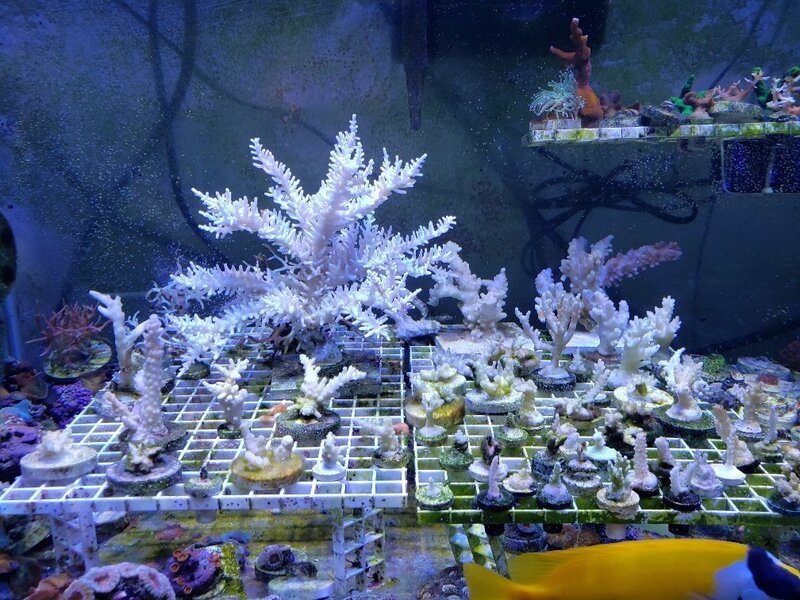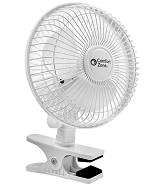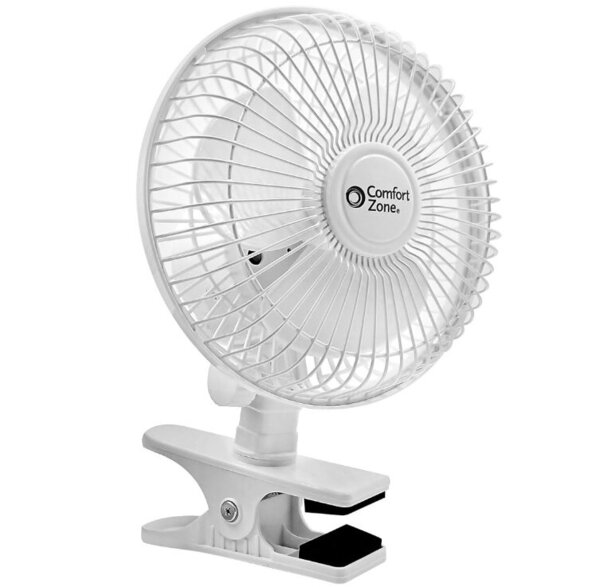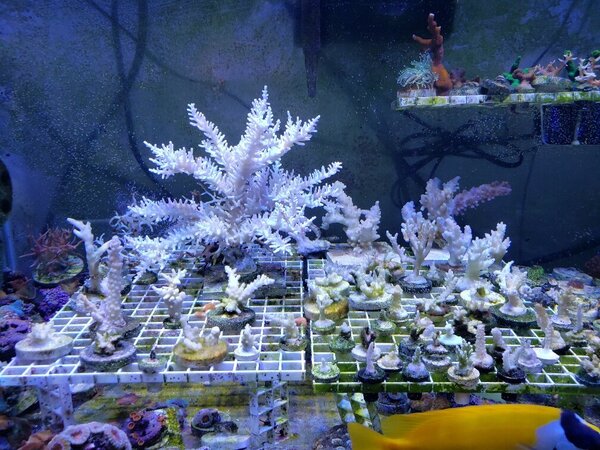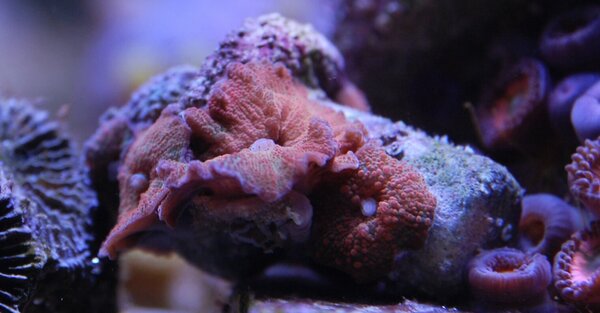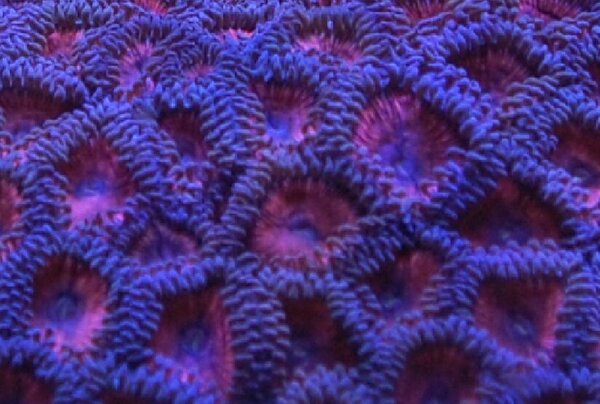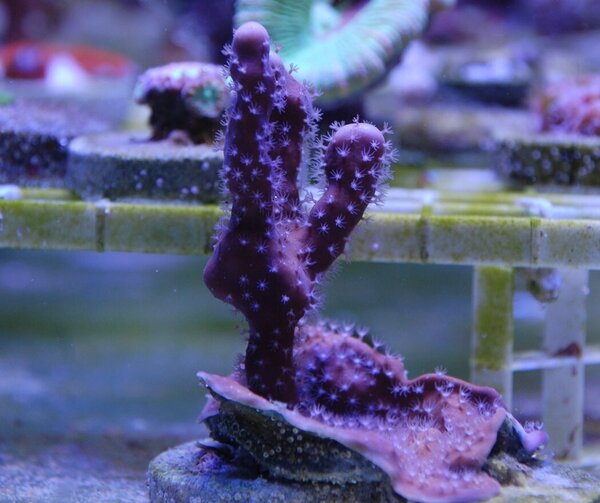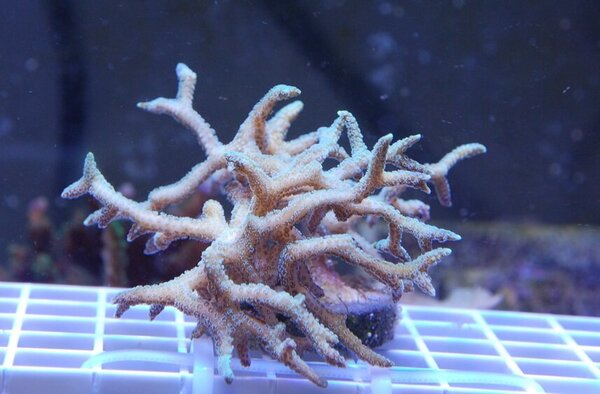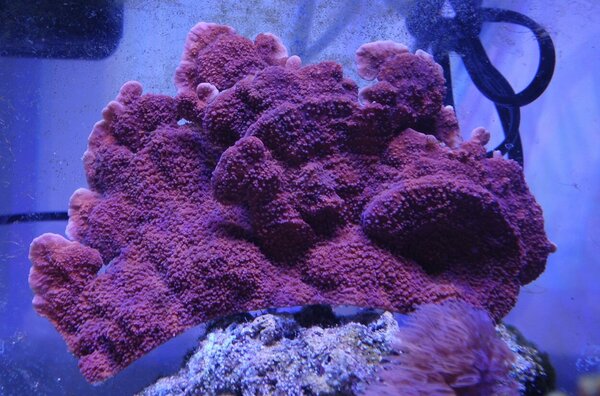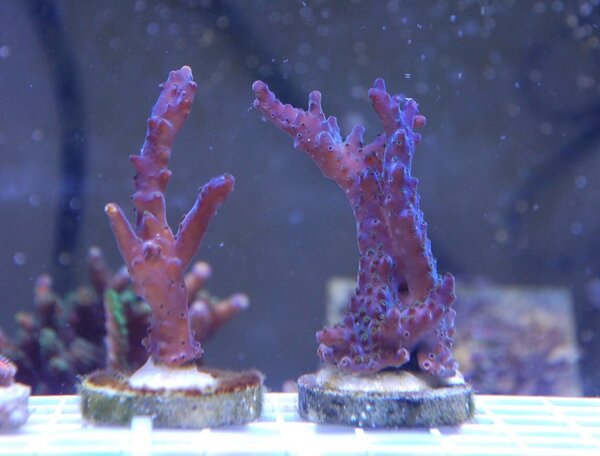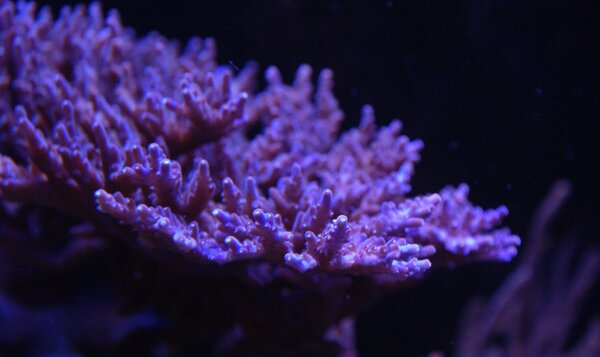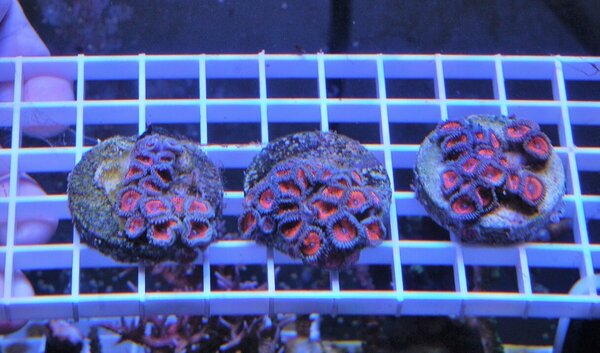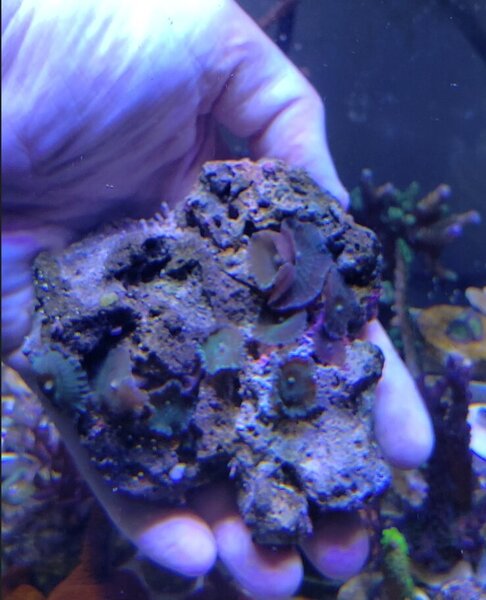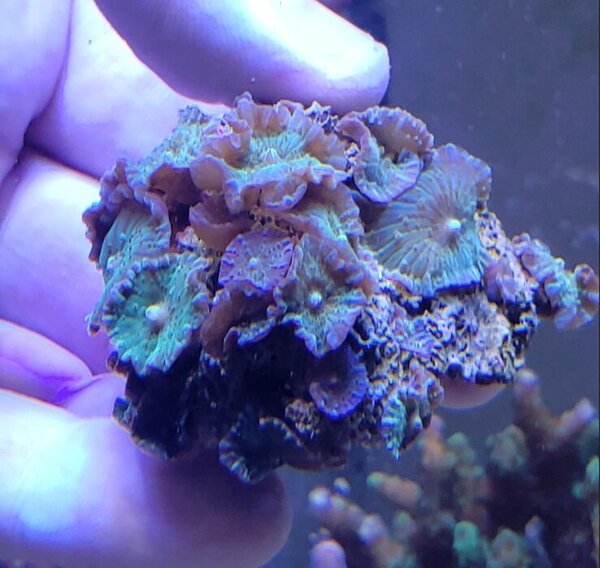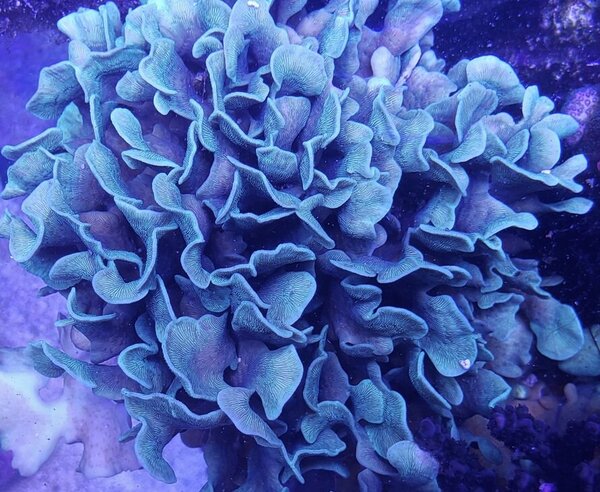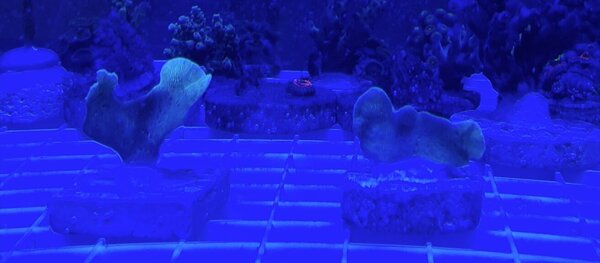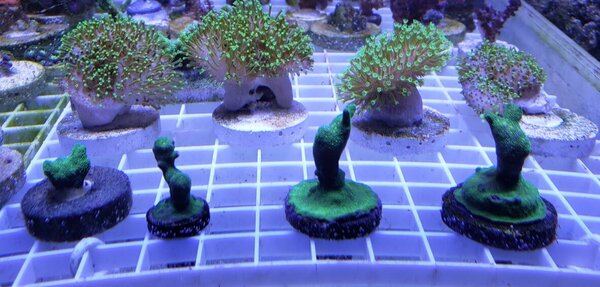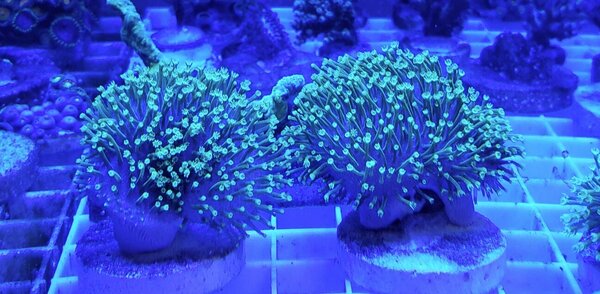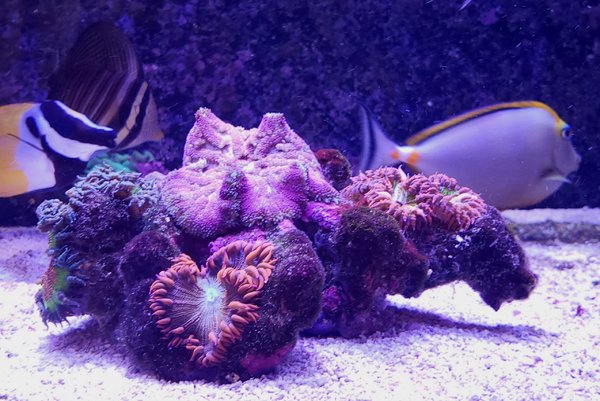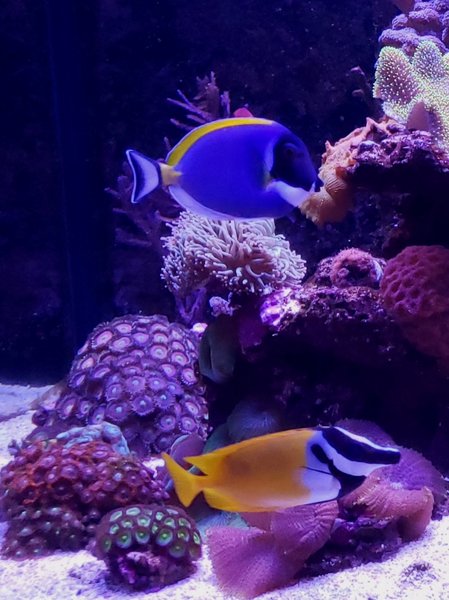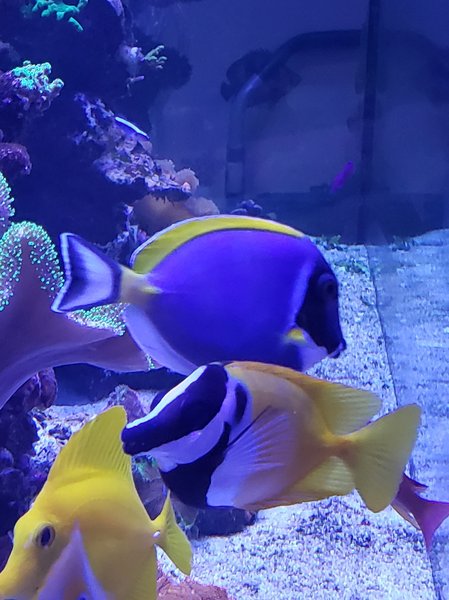
Jon Lazar
WAMAS Family Member-
Posts
3,250 -
Joined
-
Last visited
Jon Lazar's Achievements

Oracle Reefer (12/13)
-
My new coral graveyard...lessons learned
Jon Lazar replied to Jon Lazar's topic in General Discussion
Thanks everyone for the condolences. Live and learn! -
Just a public service announcement to check your tank and sump for electrical devices that might fall into it! I used to use a 6" fan to cool my frag tank through evaporation. I thought I was being careful by attaching it securely to a 2x4, making sure the gooseneck was tight, and minimizing slack in the power cable so there'd be no way it could end up in the tank. Well, last week the plastic clamp broke in half at some point during the night, allowing the fan to fall partly into the tank. The fan was plugged into an Apex Energy Bar and didn't trip any circuit breakers, so the current just kept flowing. This resulted in the copper in the wires and fan dissolving from electrolysis, effectively dosing the tank with copper. When I saw the frag tank in the morning, the water was completely clouded over and had that dead coral stench. I immediately used all the mixed saltwater I had on hand to do water changes. I drained and refilled the tank (100% water change), then did another ~50% water change. I also added a couple of Poly Filters in the tank to absorb any last traces of copper. The losses were heartbreaking. All the small acro frags were dead within a day. The birdsnest and larger acros hung on a few more days, but within a week almost all of them were dead too. The worst part was that most of the acro frags were newly acquired specimens, waiting to go into the display tank. So now I don't have any of those corals at all. At least my zoas, acans, and LPS corals came through ok. Learn from my misfortune! - Take a look at your own setup and see if something similar might happen to you. Light fixtures, frayed powerhead cords, things like that. Maybe even battery-power autofeeders? - The electrolysis and copper poisoning happened pretty fast. The fan fell in the water sometime after 1500, and I saw the wreckage the next morning at 0730. - Keep saltwater on hand for emergencies. If I didn't have enough to do a complete water change, I could've filled a bucket with clean saltwater and dumped all my frag tank corals into the bucket. Better a jumbled pile of frags than letting them sit in a toxic bath of copper. I'd even mix up new saltwater with dechlorinated tapwater, rather than leave the corals in copper. While the sps died despite the water changes, the other corals pulled through ok. - Keep Poly Filters in inventory and ready to use. I knew exactly where mine were so I didn't have to search everywhere for them. - Consider keeping your frag tank on separate plumbing and water than your display tank. My approach is for the frag tank to be an ark so I'd have a replacement frag if a display tank coral RTNed. But if my frag tank had been plumbed to the display, I would've lost all those colonies too. - Not sure yet whether a grounding probe would've tripped a house circuit breaker, stopping the electrolysis.
-
Jon and Maureen’s 350g Tank: The Reef Awakens
Jon Lazar replied to Jon Lazar's topic in Dedicated Tank (Build) Forum
You're right; we're way behind on updates! The tank is making good progress, with the usual ups and downs over time. I'll work on getting some pics for a proper update. -
IIRC fenbendazole kills xenia and some other softies like gorgonians, clove polyps, and green star polyps. Zoanthids and frogspawn are safe. Not sure about leather corals. I've had great success with using bandage gauze to remove xenia. Take a 1" x 2" piece of gauze and fold it in half between your index finger and thumb. Then pinch the xenia and tear it off the rock. The gauze allows you to grip the xenia and remove nearly all of it. Scrape any remaining scraps off with a toothbrush. I got the idea when a dentist did this to my tongue (gripping it, not the tearing it out!) while doing his routine check for mouth cancer. Regardless of whether you use fenbendazole, I would try manual removal first to knock it back to manageable levels.
-
Over time all your wet rock will turn dark with coralline and other algae. But the piece of rock that sits above the waterline will stay bleached white. You might find that to look unnatural. I would find a piece of live rock that looks weathered and use that instead. Or, they make live rock that has a more natural look, marketed as "Real Reef Rock" and "Life Rock". There may be pictures online on what a mature tank looks like with above-water rock.
-
I'd try tightening it some, but I would also have an extra bulkhead on hand if you don't already. I've had more than one ABS bulkhead or nut crack. And then your next post will be, Help, it's 10pm and I need a bulkhead! When you took it apart before, did you happen to check the flange for plastic flashing left behind from the manufacturing process?
-
I run a beananimal return into my sump. How do you arrange the siphon drain and overflow plumbing so that the beananimal process restarts properly if you restart the return pump?
-
I did something very similar where a connection leaked current into saltwater. I think it was a MJ1200 running in a 5 gallon bucket to mix saltwater, and the cord was frayed where it entered the body of the MJ. This probably ran several hours before I noticed it, and the water was shockingly bright blue. Not just fresh-saltwater blue or slightly-tinted blue. I expect the electricity dissolved the braided copper wires in the power cord. So some copper ion, like copper hydroxide or some such, almost certainly ended up in your container. I would think that a good cleaning will be sufficient, but I would still proceed very cautiously both for freshwater and saltwater. Do you have access to a low-range copper test kit to verify there's no detectable copper? Or a Poly-pad that you could use prophylactically?
-
What exactly is noisy? Waterfall into the overflow box? Running water sound in your secondary drain? Gurgling/flushing sounds from the overflow creating siphon and then breaking it? Splash into the sump? Several little things can change the flow balance of a BA. The drain and return pipes get coated with bacterial slime and sponges, which can either increase or decrease flow. Starts and stops can dislodge little sponges or other critters in the pipes that used to block flow slightly. Debris or sponges can partially block your gate valve opening (which are often mostly closed) then get blown clear by starts and stops. But all of this should be fixable by tweaking the gate valve to rebalance the flow. Can't you adjust the gate valve to make it quiet again?
-
While it's possible to do this, it's certainly not optimal. I don't think the air temperature matters per se, so long as the water temperature stays within reasonable limits. One could use heaters and a chiller to keep things safe for the inhabitants. But if there's an equipment or sensing failure, they're going to have real problems because the water will seek equilibrium with the ambient air temperature. 86 is too hot, and 71 is too cold. A single excursion may not kill the corals, but it will hurt them.
-
Re-thinking the "grow out and trade" practice
Jon Lazar replied to treesprite's topic in General Discussion
There's nothing wrong IMO with rehoming a fish that's grown too large, so long as the aquarist knows what they're doing. I've used a large Lee's specimen container to gently corner many, many fish to move them from one tank to another. Usually between hospital tanks or QTs, but also in smaller reefs. It works great and usually doesn't scare the fish. If you've never caught a fish and don't have a specific plan on how you'd do it, you probably shouldn't buy a fish that's going to outgrow your tank. Also, I think our tanks are less stressful in some ways than many people think. Remember, most fish in the ocean get eaten by other fish and are constantly looking over their "shoulder." Fish in the ocean are constantly trying to defend their territory, and compete for mates. Much of these competition pressures are reduced in our tanks when we only stock one of each species.


